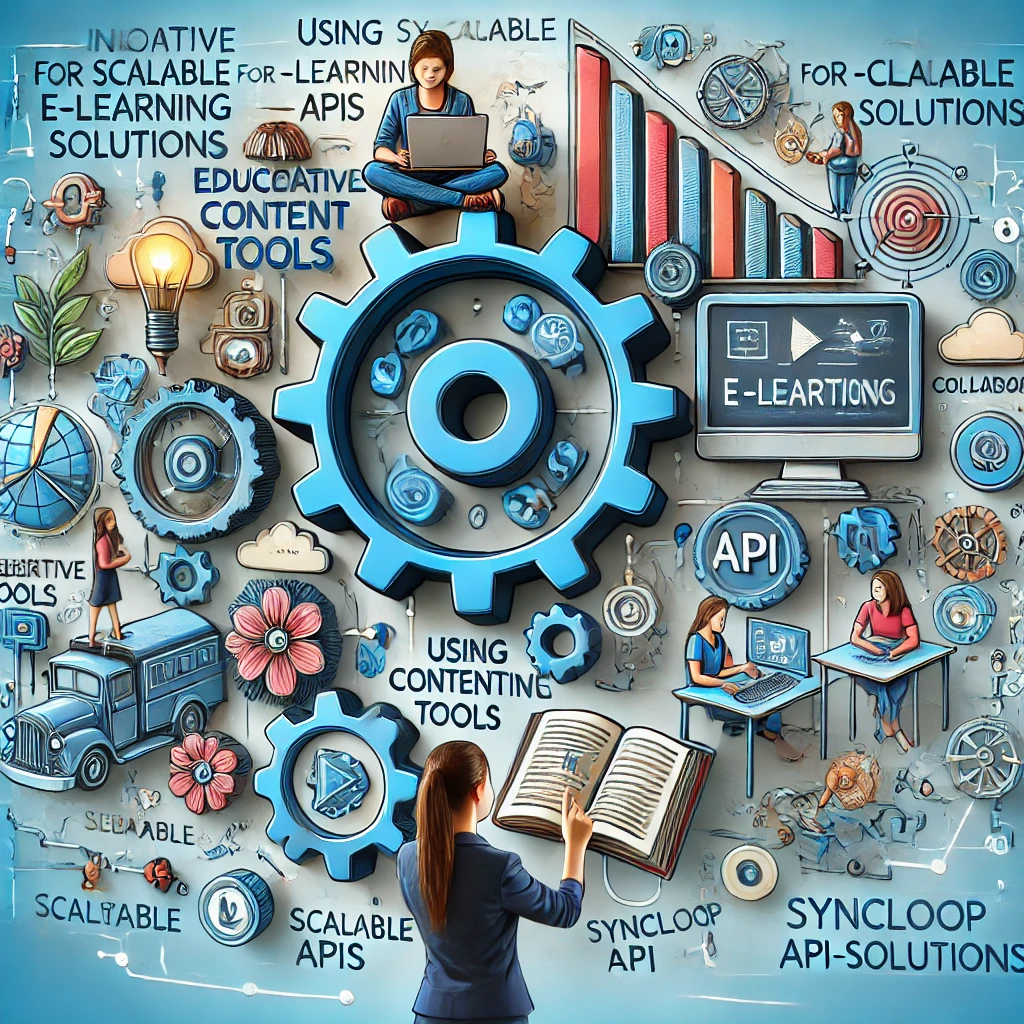Using Syncloop for Scalable E-Learning API Solutions

Syncloop provides a robust platform for developing scalable e-learning APIs, addressing the complexities of integration, real-time communication, and data management. This blog explores how Syncloop can help e-learning platforms build scalable API solutions and best practices to optimize their implementation.
The Role of APIs in E-Learning Platforms
APIs facilitate e-learning ecosystems by enabling the following:
- Content Delivery: APIs fetch and deliver educational content dynamically based on user preferences and progress.
- User Authentication: Secure login and access control for students, teachers, and administrators.
- Real-Time Communication: Enabling live classes, chat, and interactive sessions.
- Data Synchronization: Syncing student data across platforms like SIS and LMS.
- Analytics Integration: Connecting e-learning platforms with analytics tools for tracking progress and outcomes.
APIs are vital for ensuring that e-learning systems remain dynamic, scalable, and user-friendly.
How Syncloop Simplifies E-Learning API Development
Syncloop provides powerful features tailored for building APIs that enhance e-learning platforms:
- Rapid API Development Low-code and no-code tools enable quick API creation and deployment.
- Dynamic Data Mapping Manage diverse data formats from multiple systems to ensure compatibility.
- Scalable Infrastructure Handle high traffic during peak usage times, such as exams or live sessions.
- Real-Time Communication Support live interactions with APIs designed for minimal latency.
- Security and Compliance Ensure secure data transfers and compliance with regulations like FERPA and GDPR.
- Monitoring and Analytics Track API performance and user engagement to optimize the learning experience.
Steps to Build Scalable E-Learning APIs with Syncloop
Step 1: Identify Key Functionalities
Determine the essential functionalities for your e-learning platform. Examples include:
- User authentication and access control.
- Fetching course content and assignments.
- Integrating video conferencing tools for live classes.
- Syncing progress and grades with an SIS.
Step 2: Design the API Structure
Use Syncloop’s API builder to define endpoints for each functionality. For example:
- /user/login for authentication.
- /courses/{courseId}/content for fetching course materials.
- /grades/sync for synchronizing student grades.
Step 3: Integrate Third-Party Services
Leverage Syncloop to integrate with third-party services such as:
- Video conferencing tools like Zoom or Microsoft Teams.
- Payment gateways for subscription management.
- Analytics platforms for tracking student performance.
Step 4: Implement Real-Time Capabilities
Use Syncloop’s real-time processing features to support live interactions, including:
- Chat and Q&A sessions.
- Notifications for assignment deadlines and announcements.
- Live quizzes and polls.
Step 5: Test and Optimize
Simulate different user scenarios using Syncloop’s testing environment. Optimize APIs for latency, scalability, and reliability to handle peak loads effectively.
Step 6: Deploy and Monitor
Deploy APIs using Syncloop’s cloud-native infrastructure. Continuously monitor performance metrics, such as response times and error rates, using built-in analytics tools.
Best Practices for Scalable E-Learning API Solutions
- Adopt RESTful Design Use REST principles for intuitive and consistent API endpoints.
- Ensure Scalability Design APIs to handle high traffic during events like enrollment deadlines or live sessions.
- Implement Role-Based Access Control (RBAC) Securely manage user permissions for students, instructors, and admins.
- Leverage Caching Use caching to improve response times for frequently accessed data like course materials.
- Document APIs Clearly Provide comprehensive API documentation to facilitate seamless integration.
Example Use Case: Personalized Learning Platform
A personalized e-learning platform aims to deliver tailored content and real-time support to students. Using Syncloop, the platform can:
- Authenticate Users: Securely log in students and teachers with role-specific access.
- Fetch Personalized Content: Deliver content recommendations using dynamic APIs based on user progress and preferences.
- Enable Live Interactions: Support real-time classes, chats, and collaborative activities.
- Sync Data Across Systems: Synchronize user progress, grades, and attendance with the institution’s SIS.
- Track Engagement: Use Syncloop’s analytics tools to measure user engagement and refine learning paths.
Benefits of Using Syncloop for E-Learning APIs
- Enhanced Learning Experience: Deliver real-time, personalized content to users.
- Seamless Integrations: Connect with third-party tools and services effortlessly.
- Scalability: Handle high user volumes during peak times.
- Improved Security: Protect sensitive data with advanced security features.
- Operational Efficiency: Streamline API development and deployment with Syncloop’s intuitive tools.
The Future of Scalable E-Learning Solutions
As e-learning continues to evolve, platforms will need robust, scalable APIs to support diverse user needs, integrate advanced technologies, and deliver personalized experiences. Syncloop equips e-learning providers with the tools to meet these demands, ensuring that they remain competitive and innovative.
Image Description
A conceptual graphic illustrating e-learning API integration using Syncloop, showcasing content delivery, user authentication, real-time interactions, and performance analytics in a dynamic learning environment.
Back to Blogs